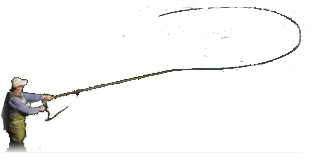The formula and construction method was developed by Eiji Yamakawa a master tenkara angler and line maker. He taught me his method and that is how I make the lines.
The base sections are 1X
Mid section 2X
Tip section 3X
Each section is made of 3 strands of fluro in 4 ft lengths.
A 16 ft line for example is made of 2 sections of 1X, 1 section of 2X, tip section of 3X.
A 32 ft line is made of 5 sections of 1X, 1 section 2X, tip section of 3X.
Eddie's formula is not a closely guarded secret. The teacher/student arrangement we have is that he taught me how to make his lines and I promised him I would share his line making methods freely to all who want to learn.
I find the lines from 12-20 ft very easy to keep off the water. As the lines get longer all the way to 40 ft, there is really no way to keep all the line off of the water, there will be some line on the water even with 15 and 17 ft rods (yes I have access to a 17 ft tenkara rod).
The lines have a much smaller diameter than a nylon mono line of the same test rating and they slice through wind better than any other line I have ever tried.
The 12-24 ft lines are optimized for 5:5 rods in lengths of 12-14 ft. The 28, 32,and 40 ft lines work best with a slightly stiff 6:4 or 7:3 in 13-14 ft length rods.
Eiji spent over 10 years developing his line formula and it just plain works. These lines may not be for everyone but I sure like them and I hope that others will also.
John





 Reply With Quote
Reply With Quote